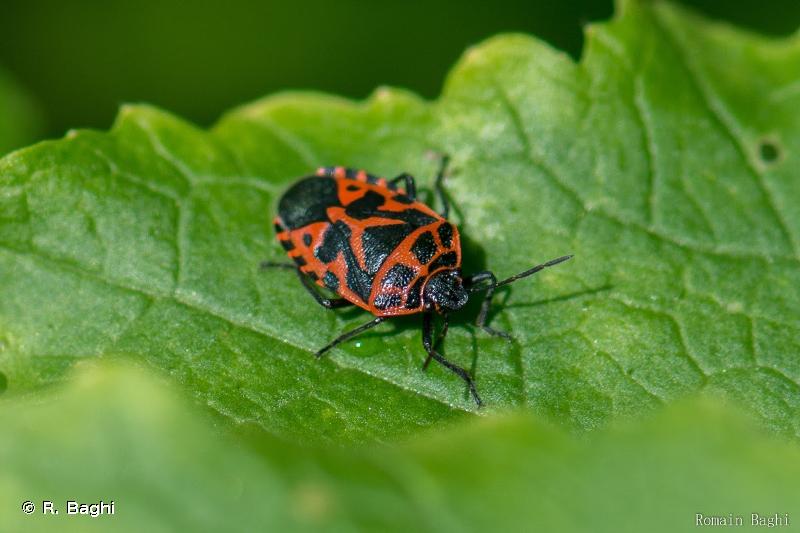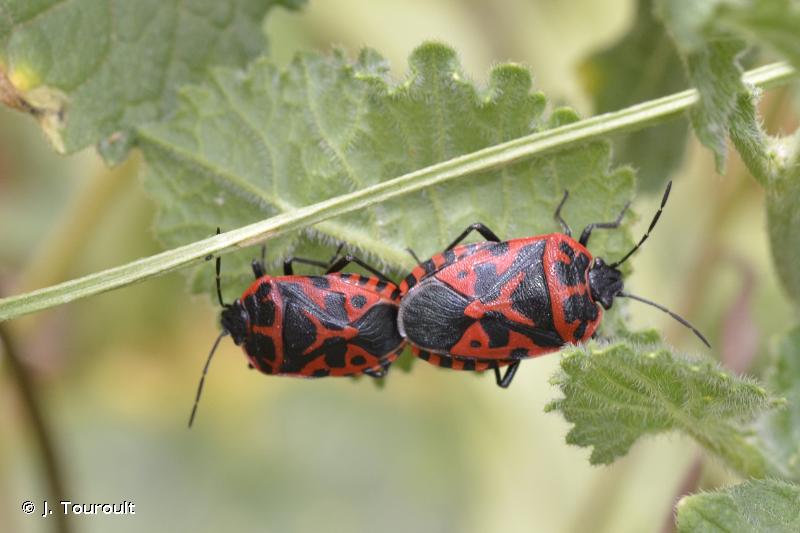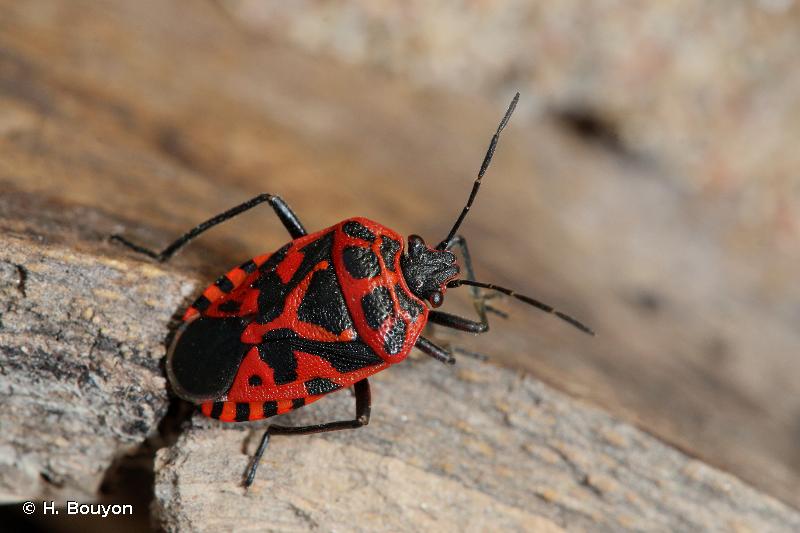
cd_nom

| Author : R. Baghi |
 |
Despite the Creative Commons license, please inform the author of the use which will be made of his photo

| Author : J. Touroult |
 |
To get the picture, please visit:
Despite the Creative Commons license, please inform the author of the use which will be made of his photo

| Author : H. Bouyon |
 |
To get the picture, please visit:
Any reuse of one or more photographs on this site is subject to an authorization request from the author.
Link to the Code of Intellectual Property (Legifrance)
Taille : 7,5 – 11 mm
Diagnose :
Punaise assez large, de coloration générale noire à reflets métalliques, bariolée de taches claires rouges ou orange. Corie (partie sclérifiée de l'aile antérieure) dont la partie centrale (mésocorie) porte au moins 2 grandes taches claires, et dont la partie externe latérale (exocorie) porte une tache noire en son milieu, l'apex et la base restant claires. Scutellum avec une tache claire principale en forme de Y.
Détermination : Moyennement difficile.
Espèces proches :
Elle ressemble à Eurydema ornata plus étroite et moins massive et dont le connexivum (bord de l'abdomen) ne montre que 3 taches quadrangulaires noires visibles alors qu'on en voit 4 chez E. ventralis. Elle ressemble aussi à Eurydema dominulus, mais celle-ci n'a pas de tache médiane noire sur l'exocorie.
Période d'observation :
Mars à novembre, avec le plus d'observations de mai à aout et un pic en juillet.
Biologie-éthologie :
Elle vit sur beaucoup de crucifères, dont le plus souvent les choux et autres crucifères cultivées comestibles (colza, navets, moutardes), les pastels, les diplotaxis ou les sisymbres. C'est un des principaux ravageurs des crucifères comestibles cultivées.
Biogéographie et écologie :
Espèce eurosibérienne, elle est absente en Grande-Bretagne, Danemark et Scandinavie au nord, et ne dépasse pas 57° de latitude nord. Présente en Europe méridionale et moyenne, Moyen-Orient et Asie centrale jusqu'en Chine. Elle peut atteindre 2 100 m d'altitude, et vit dans beaucoup de milieux : cultures de crucifères, friches, milieux rudéraux, prairies fleuries, bords des chemins, pelouses rases, dunes, garrigues, pinèdes claires, jardins. Elle est très commune et en densités importantes dans le sud et se raréfie en remontant au nord.
Roland Lupoli (),2020
Continental
Metropolitan France
Overseas
Marine
Metropolitan France
Overseas
The map presents a summary at the 10 x 10 km grid of the observation data for the species transmitted to the SINP. These data have been subjected to validation filters.
The map presents a reference distribution layer of the species at the scale of departments and marine sectors. The presence and absence data were established by expertise within a network of partners. This reference distribution is used in the validation process of the SINP data at the INPN level.
Corresponds to a report on the basis of at least one observation proved within a period of 10 years (20 years for little-known invertebrates) preceding the year and no presumption of extinction since obtaining the last data nor doubt on reproductive and implemented nature of this population. For migratory species, the presence indicated concerns areas of reproduction.
This status is based on one or more of the following criteria:
This point covers the absence, more difficult by nature to demonstrate than presence. This status is based on one or more of the following criteria:
This status must be assigned to a department in which the presence of the species is casual.
Particular case of absence due to a proven extinction less than a half century ago (older disappearances are treated as "no probable or definite").
In the state of knowledge, we can not comment on the presence or absence in the current department. This is the default status when not comprised in one of the previous categories or whenever there is doubt.
The map shows the global distribution of the species based on GBIF data (Global Biodiversity Information Facility).
